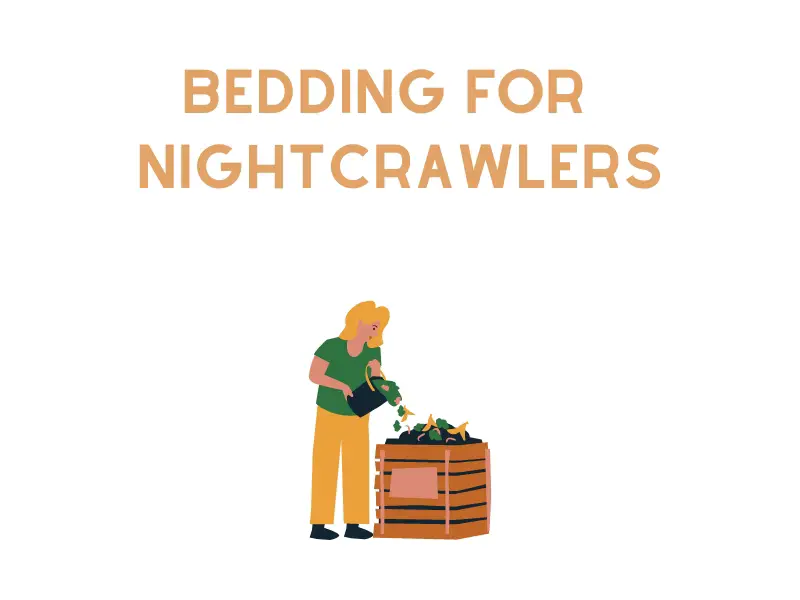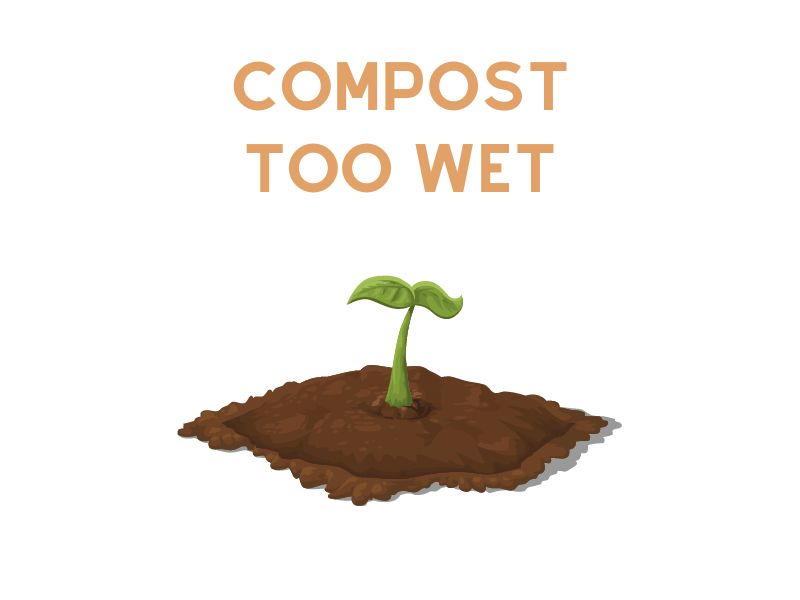If there’s one thing I’m passionate about, it’s composting! The process of breaking down organic material to create rich, nutrient-dense soil is fascinating, and nightcrawlers play a crucial role in the composting ecosystem. Creating the perfect worm bedding for nightcrawlers is essential, as they break down organic material, aerate the soil, and produce nutrient-rich castings. In this comprehensive guide, we’ll explore the perfect worm bedding for your nightcrawlers to thrive, keeping them happy and healthy.
Understanding Nightcrawler Needs
Nightcrawlers are a fantastic addition to any composting system, but they have specific needs to ensure they stay content and productive. Let’s delve into their preferred habitats, the importance of moisture, temperature, and pH, and their nutritional requirements.
Ideal Worm Bedding Materials
- Peat moss
- Pros: Peat moss is an excellent bedding material, providing a soft, moist, and slightly acidic environment that nightcrawlers love. It can hold moisture well, ensuring your worm friends stay hydrated.
- Cons: Harvesting peat moss can be environmentally damaging, and it may require pH adjustment.
- How to use: Mix dampened peat moss with other bedding materials in a 1:1 ratio. If needed, adjust the pH by adding crushed eggshells or dolomite lime.
- Coconut coir
- Pros: A sustainable alternative to peat moss, coconut coir is also a moisture-retaining and soft material, making it an ideal bedding option for your worms.
- Cons: Like peat moss, coconut coir may require pH adjustments.
- How to use: Hydrate coconut coir bricks according to the instructions, then mix with other bedding materials in a 1:1 ratio. Adjust pH if necessary.
- Aged compost and manure
- Pros: Aged compost and manure provide a nutrient-rich environment for nightcrawlers, encouraging their growth and reproduction. They also contain beneficial microorganisms that help break down organic matter.
- Cons: Fresh manure can heat up and harm the worms, so ensure it’s aged and well-rotted before use.
- How to use: Mix aged compost or manure with other bedding materials in a 1:1 ratio.
- Shredded paper or cardboard
- Pros: Shredded paper and cardboard serve as a fantastic carbon source for your worm bedding, helping to maintain the ideal balance in your composting system.
- Cons: Ink on printed paper may be harmful to worms, so opt for unprinted or non-toxic inks when possible.
- How to use: Mix shredded paper or cardboard with other bedding materials, ensuring they’re dampened but not soaked.
Mixing and Layering Bedding Materials
Combining various materials not only provides a diverse environment for your nightcrawlers but also ensures their nutritional needs are met. A well-balanced mixture of bedding materials is crucial for their overall health. Layer your chosen materials, starting with a base layer of shredded paper or cardboard, followed by a mix of peat moss, coconut coir, and aged compost or manure. Adjust moisture levels and pH as necessary.
Do you already have a worm composter?
Maintaining a Healthy Bedding for Nightcrawlers
Monitoring and maintaining your worm bedding is essential to keep your nightcrawlers happy and productive. Regularly check moisture and pH levels, feed your worms without overfeeding, and keep pests and diseases at bay. As your worms break down organic material, don’t forget to harvest the rich castings and refresh the bedding materials to keep the environment suitable for your worm.
Regular monitoring of moisture and pH:
- Keep the bedding damp, but not overly wet, to prevent the worms from drowning or suffocating.
- Maintain a pH level between 6 and 7 for the ideal nightcrawler environment.
Feeding and avoiding overfeeding:
- Provide a balanced diet of fruit and vegetable scraps, coffee grounds, and crushed eggshells.
- Avoid feeding your worms meat, dairy, or oily foods, as they can attract pests and cause foul odors.
- Feed worms in small amounts, only adding more when previous food has been mostly consumed.
Preventing pests and diseases:
- Keep your worm bin well-aerated and clean to prevent the growth of harmful bacteria or fungi.
- Watch for signs of pests, such as fruit flies, and take preventive measures, like burying food scraps and maintaining proper moisture levels.
Harvesting and refreshing bedding materials:
- After several months, the bedding will turn into nutrient-rich castings, also known as “black gold” – an excellent natural fertilizer for your plants.
- To harvest the castings, move them to one side of the bin and place fresh bedding materials on the other side. The worms will migrate to the new bedding, making it easier to collect the castings.
- After harvesting, refresh the bedding materials by replacing old layers with new, dampened materials.
How to Make a Worm Bed for Nightcrawlers
Constructing a comfortable and efficient worm bed is essential to keeping your nightcrawlers happy and healthy. Here’s a step-by-step guide to creating the perfect home for your wiggly friends:
- Choose a container: Select a dark, opaque container with a lid and plenty of ventilation, as worms prefer a dark environment. A plastic storage bin or wooden box works well. Aim for a depth of at least 8-12 inches, as nightcrawlers are burrowing worms.
- Drill holes for aeration: Drill small holes (about 1/8-inch in diameter) on the sides and the lid of the container for proper air circulation. Also, drill a few holes in the bottom to allow excess moisture to drain.
- Prepare the bedding materials: Gather your chosen bedding materials, such as peat moss, coconut coir, aged compost, manure, and shredded paper or cardboard. Dampen the materials, ensuring they’re moist but not soaked, and adjust the pH as necessary.
- Layer the bedding materials: Start with a base layer of shredded paper or cardboard, followed by a mix of peat moss, coconut coir, and aged compost or manure. Make sure the bedding is at least 6 inches deep to provide enough space for the worms to burrow and move around.
- Introduce your nightcrawlers: Gently place your worms on top of the prepared bedding, and they will naturally burrow into the materials. Add some food scraps, like fruit and vegetable peels, to give them a tasty welcome treat.
- Monitor and maintain the worm bed: Regularly check the moisture and pH levels, feed your worms appropriately, and address any pest or disease issues to ensure a healthy environment for your nightcrawlers.
Final Thoughts
Creating the perfect worm bedding is a rewarding experience for any composting enthusiast, as it promotes the health and productivity of your nightcrawlers. By understanding their needs, providing a well-balanced mix of materials, and regularly maintaining the bedding, you’ll enjoy an efficient composting system and nutrient-rich castings. Don’t be afraid to experiment and find the best bedding mix for your unique composting setup. Happy composting, and may your nightcrawlers thrive!








